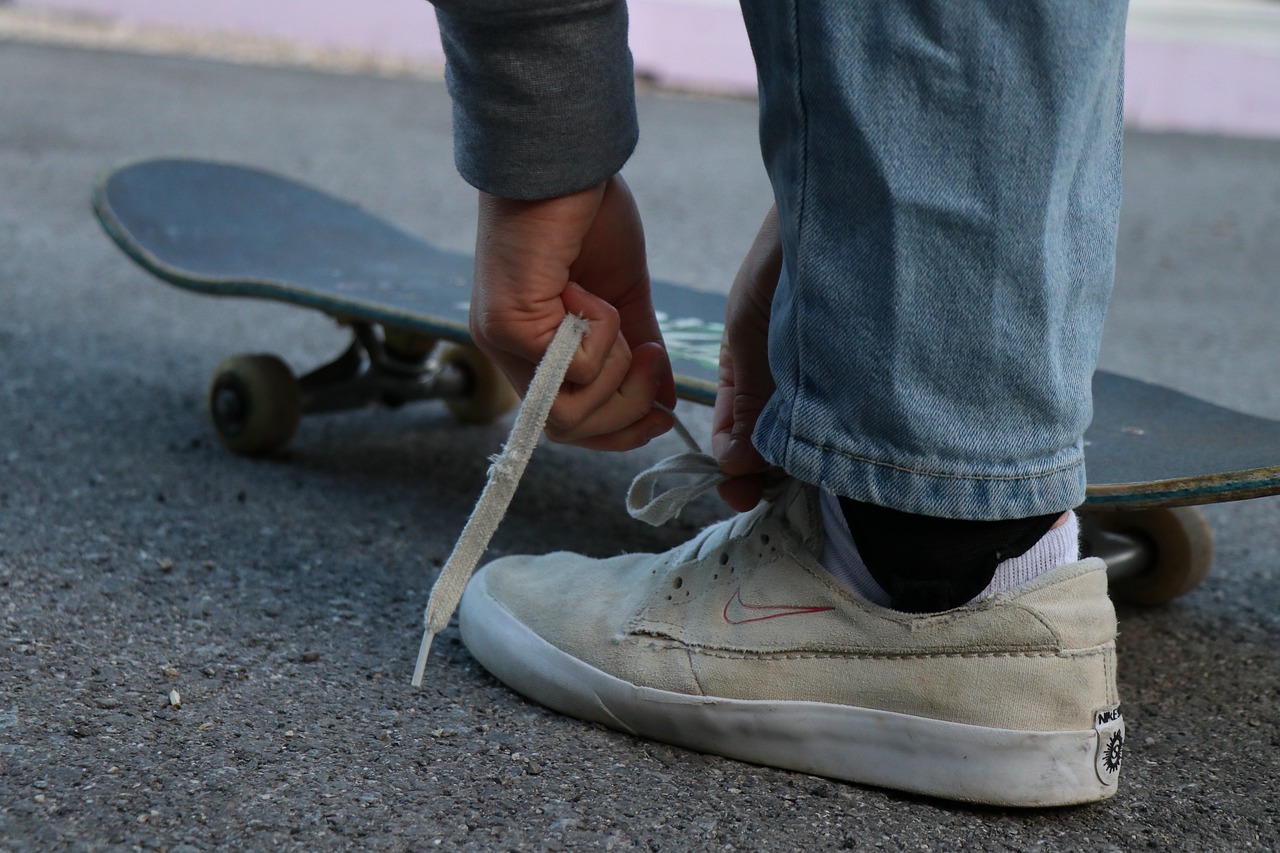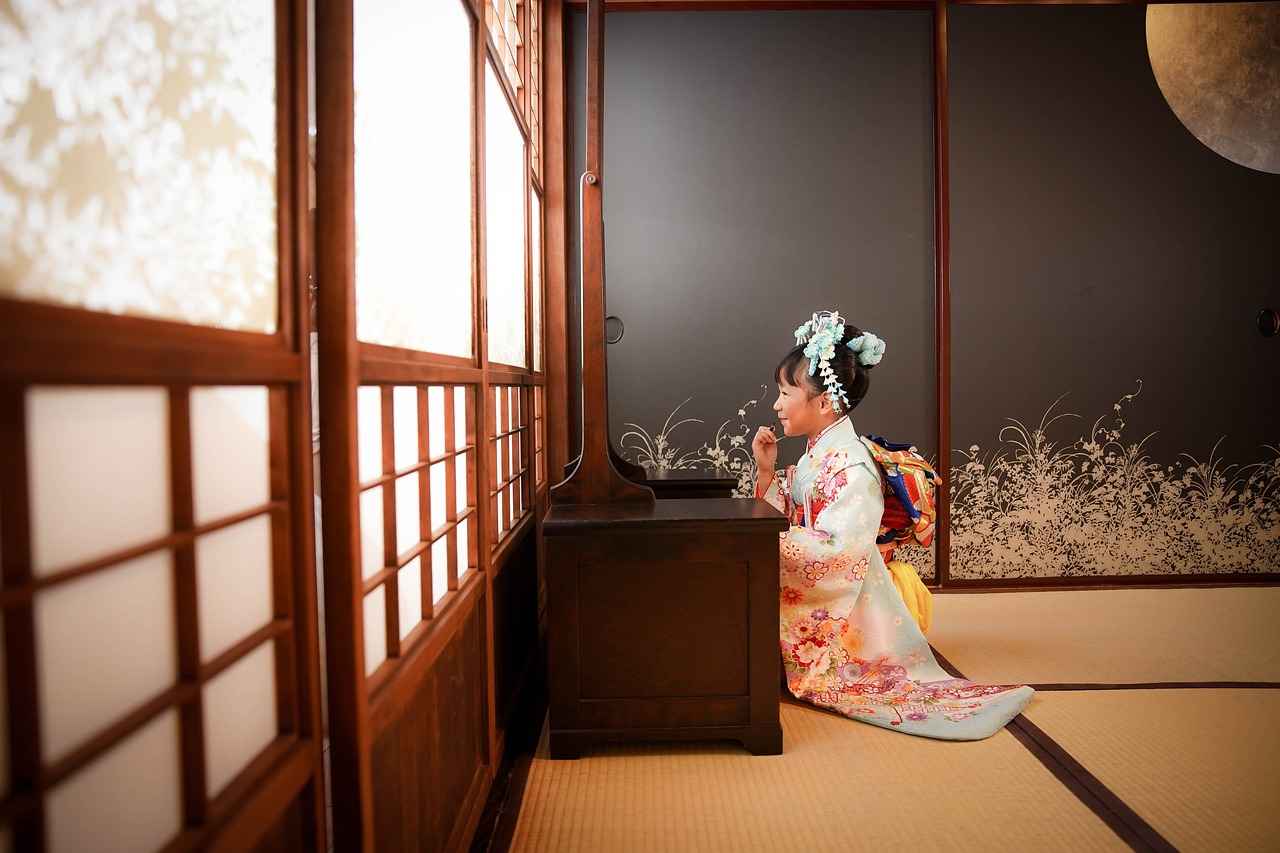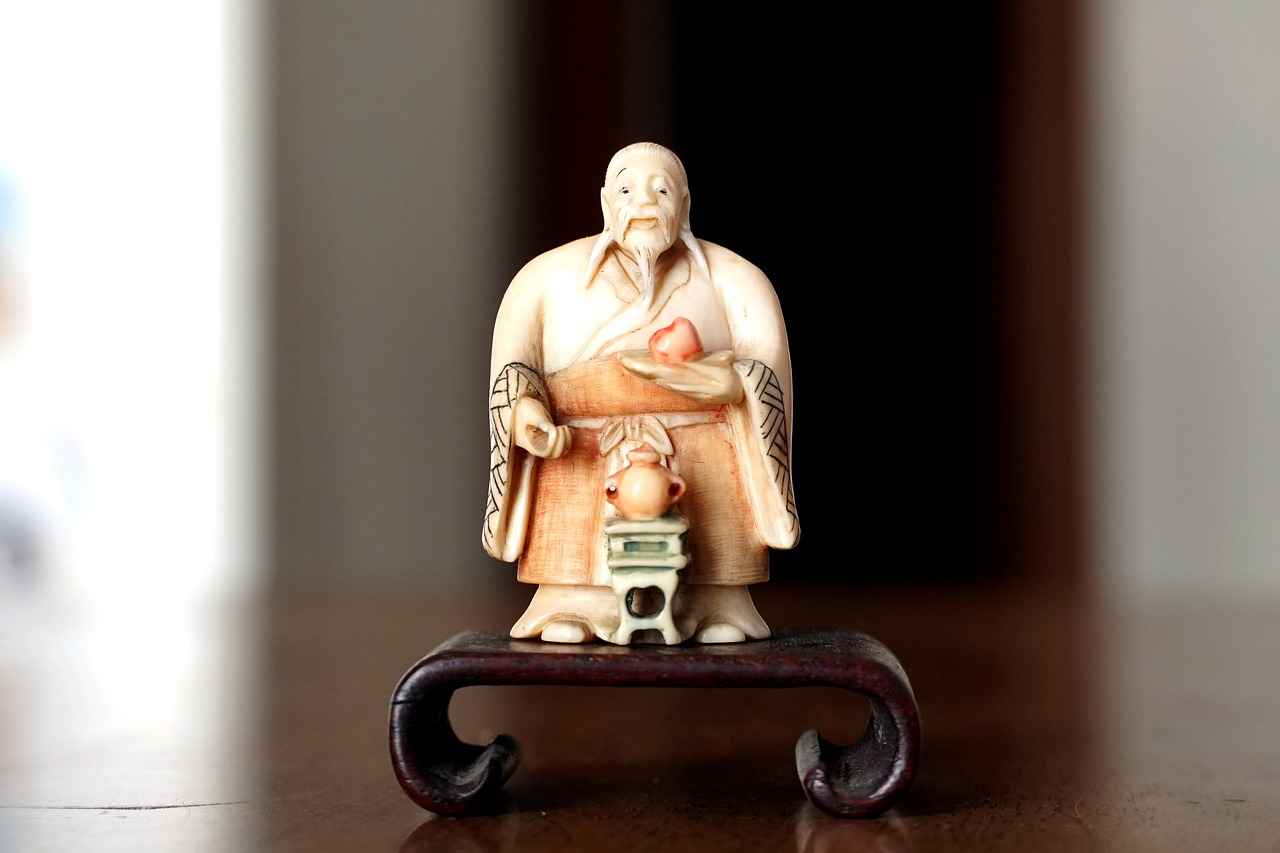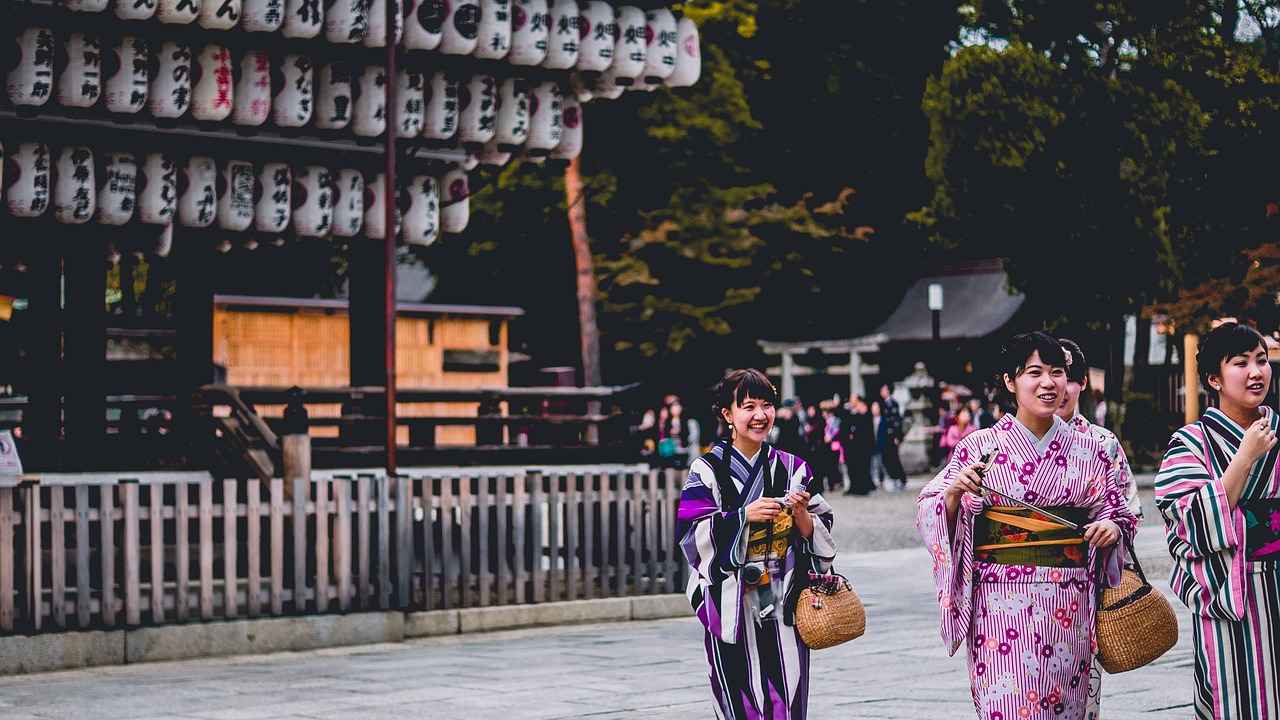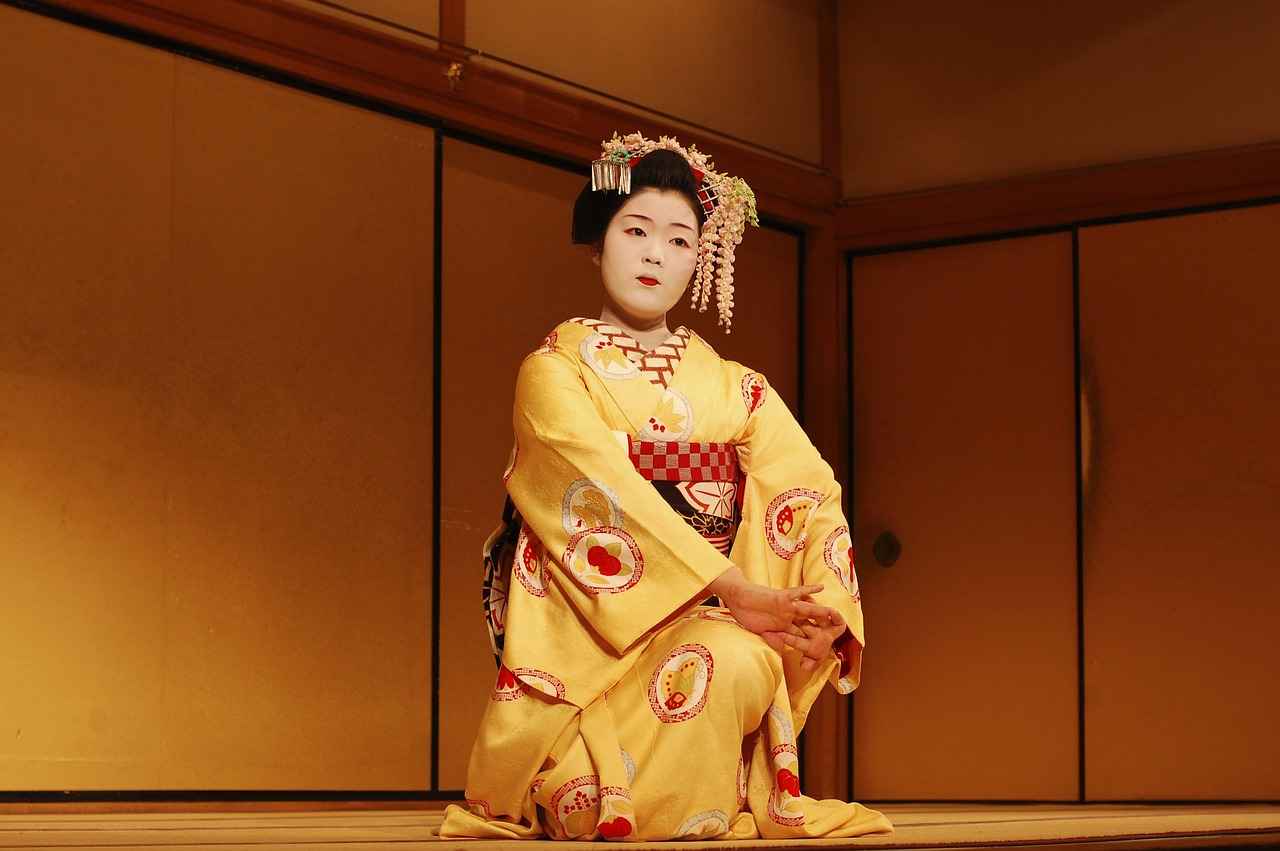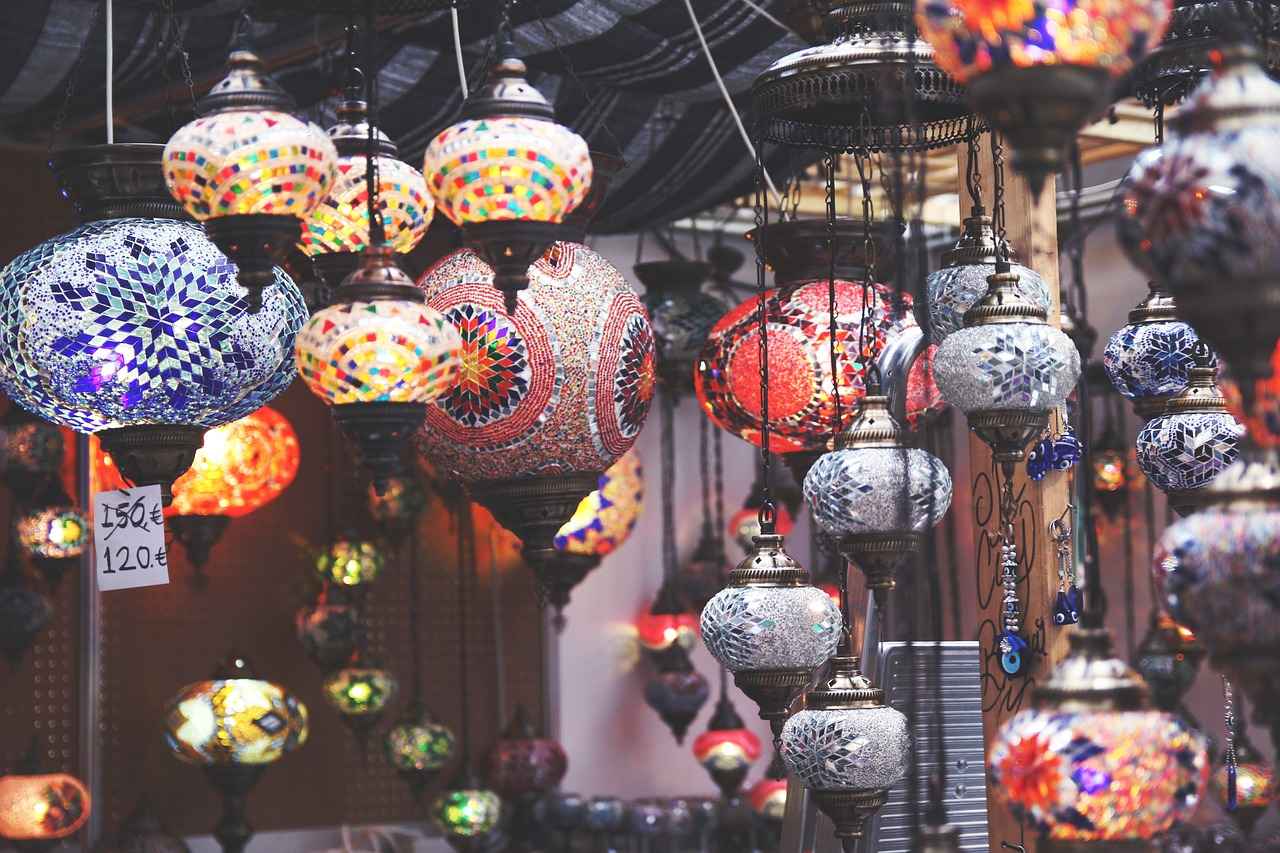This article delves into the unique blend of comfort and style found in kimono shoes, exploring their history, design, and cultural significance, while providing practical insights for potential wearers.
The History of Kimono Shoes
Kimono shoes have a rich and storied history deeply rooted in Japanese culture. These traditional footwear pieces date back centuries, evolving alongside the kimono itself. Originally designed to complement the kimono, they have adapted through various eras, becoming a staple in both traditional and modern fashion.
Types of Kimono Shoes
- Zori: Flat sandals made from rice straw or synthetic materials, known for their simple design and versatility.
- Geta: Elevated wooden sandals that provide a unique aesthetic, often worn during festivals.
- Waraji: Traditional straw sandals that reflect an ancient form of Japanese footwear.
Choosing the Right Kimono Shoes for You
Selecting the right kimono shoes involves considering factors such as comfort, occasion, and personal style. Whether you prefer the casual elegance of zori or the unique charm of geta, there is a perfect pair for everyone.
Fit and Sizing Considerations
Understanding the fit and sizing of kimono shoes is crucial for comfort. Different styles may require different approaches to sizing, so it’s essential to try them on or refer to sizing guides.
Maintaining Your Kimono Shoes
Proper care and maintenance of kimono shoes can extend their lifespan. Regular cleaning and appropriate storage can keep them looking stylish and fresh. For example, zori made of fabric can be spot cleaned, while wooden geta may need occasional polishing.
Conclusion
In conclusion, kimono shoes are more than mere footwear; they are a blend of tradition, comfort, and style. By understanding their history, types, and maintenance, wearers can appreciate these unique shoes while integrating them into their modern wardrobes.

The History of Kimono Shoes
Kimono shoes, known as geta, zori, and waraji, are not merely footwear; they are a significant part of Japan’s cultural heritage. Their origins can be traced back to ancient Japan, where they were initially designed for functionality and comfort. Over the centuries, these traditional shoes have evolved, reflecting the changing aesthetics and lifestyles of the Japanese people.
The earliest forms of kimono shoes were simple, made from natural materials like straw and wood. Geta, for instance, were developed during the Heian period (794-1185) and were designed to elevate the wearer above the muddy streets, allowing for a more comfortable walking experience. The distinctive clacking sound of geta has become synonymous with traditional Japanese culture, often associated with festivals and ceremonies.
As Japan transitioned into the Edo period (1603-1868), zori emerged as a popular alternative. These flat sandals were often crafted from rice straw, fabric, or leather, and became a staple for both casual and formal wear. The versatility of zori allowed them to be worn with various kimono styles, making them a fashionable choice among the populace.
Another significant type of kimono footwear is waraji, which are woven straw sandals that date back to ancient times. Originally worn by farmers and laborers, waraji have maintained their practical appeal, offering comfort and durability for long wear. Today, they are often seen in traditional festivals and are cherished for their historical significance.
In modern times, kimono shoes have experienced a renaissance, with designers reinterpreting traditional styles to fit contemporary fashion trends. This evolution highlights the enduring appeal of kimono shoes, bridging the gap between the past and present. As they continue to be embraced by both locals and tourists, kimono shoes remain a symbol of Japan’s rich cultural tapestry.
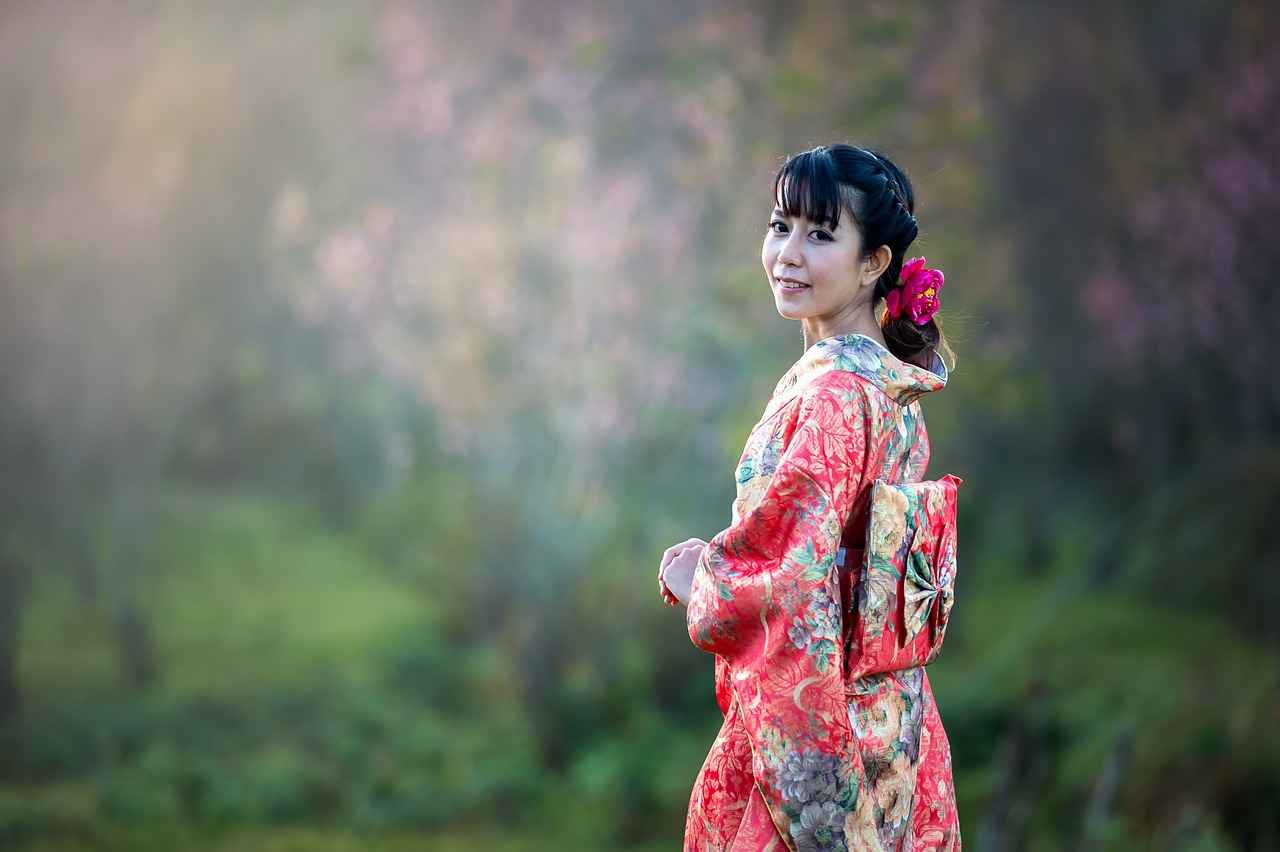
Types of Kimono Shoes
Kimono shoes, an essential component of traditional Japanese attire, come in various styles that reflect both cultural significance and functional design. Each type of shoe offers unique characteristics suited for different occasions and settings. Let’s explore the three primary types of kimono shoes: zori, geta, and waraji.
- Zori: These flat sandals are typically made from materials like rice straw, fabric, or synthetic options. Zori are known for their versatility and comfort, making them suitable for casual outings or formal events. The simple design allows them to pair well with a variety of kimono styles.
- Geta: Distinctive for their elevated wooden soles, geta are often worn during festivals and traditional ceremonies. They create a unique sound as the wearer walks, adding to the cultural ambiance. The height of the geta also provides ventilation, making them ideal for warm weather.
- Waraji: Made from woven straw, waraji represent a more ancient form of footwear. They are designed for comfort and functionality, making them suitable for long wear, especially in rural settings. Waraji are often associated with historical figures and traditional Japanese attire.
Each type of kimono shoe has its own cultural significance and practical applications. Whether you’re attending a formal event or enjoying a casual day out, choosing the right kimono shoe can enhance your overall look while paying homage to Japanese traditions.
In conclusion, understanding the different types of kimono shoes allows wearers to appreciate their history and functionality. Whether you opt for the casual zori, the traditional geta, or the practical waraji, each pair adds a unique touch to your kimono ensemble.
Zori: The Classic Choice
Zori are a traditional form of footwear in Japan, often recognized for their flat and comfortable design. These sandals are not only practical but also carry a rich cultural significance. Made primarily from rice straw or synthetic materials, zori are celebrated for their versatility and simple elegance, making them an ideal choice for both casual wear and formal occasions.
Originally, zori were crafted from natural materials, reflecting the Japanese philosophy of harmony with nature. Today, while many zori are still made from rice straw, advancements in manufacturing have introduced synthetic options that offer enhanced durability and a variety of styles. This evolution has allowed zori to remain relevant in modern fashion, appealing to a broader audience.
Zori can be made from a range of materials, each contributing to their unique aesthetic and comfort level. Common materials include:
- Rice Straw: Traditional and biodegradable, offering a natural look.
- Fabric: Often used for the straps, providing comfort and a pop of color.
- Leather: Adds a touch of sophistication and durability.
- Synthetic Materials: Available in various designs and colors, ideal for everyday use.
One of the standout features of zori is their adaptability. They can be paired with:
- Traditional Attire: Perfect for complementing kimonos and yukatas during festivals.
- Casual Outfits: Ideal for a relaxed day out, paired with shorts or summer dresses.
- Modern Fashion: Can be styled with contemporary clothing, such as jeans and casual tops.
In conclusion, zori represent a beautiful blend of tradition and modernity. Their comfort, style, and cultural significance make them a beloved choice for many, ensuring they remain a staple in both traditional and contemporary wardrobes.
Materials Used in Zori
Zori, the traditional Japanese sandals, are not only a symbol of cultural heritage but also a testament to the craftsmanship that goes into their creation. These sandals can be made from a variety of materials, each contributing to their unique aesthetics and levels of comfort.
- Fabric: Zori crafted from fabric often feature vibrant patterns and colors, making them a popular choice for casual and festive occasions. The soft texture of fabric zori provides comfort, allowing for extended wear without discomfort.
- Leather: Leather zori offer a more sophisticated look, suitable for both traditional and modern outfits. The durability of leather ensures that these sandals can withstand regular use while providing a luxurious feel. Additionally, leather molds to the wearer’s feet over time, enhancing comfort.
- Synthetic Materials: With advancements in technology, synthetic options have emerged as a practical alternative. These zori are often lightweight, water-resistant, and easy to clean, making them ideal for casual outings or beach wear. They also come in a variety of designs, appealing to a broader audience.
Each of these materials presents its own set of advantages, allowing wearers to choose zori that best fit their personal style and comfort needs. Whether you prefer the elegance of leather, the vibrancy of fabric, or the practicality of synthetic materials, zori can be tailored to suit any occasion.
In conclusion, the choice of material in zori not only affects their appearance but also their functionality. Understanding these differences can help you select the perfect pair that complements your wardrobe while ensuring comfort throughout the day.
Styling Zori for Different Occasions
is an essential skill for anyone looking to embrace the versatility of these traditional Japanese sandals. Zori, with their simple yet elegant design, can be paired with a variety of outfits, making them suitable for both formal and casual settings.
When considering how to style zori, it is important to think about the occasion and the overall look you wish to achieve. Below are some practical tips for styling zori:
- Traditional Attire: For formal events such as weddings or tea ceremonies, zori can be paired with a kimono. Choose zori that match the color palette of your kimono, and consider those made with silk or decorative fabrics for a more elegant look.
- Casual Outfits: Zori are perfect for casual wear. Pair them with summer dresses or lightweight trousers for a comfortable yet stylish look. Opt for zori made from more casual materials like cotton or synthetic fibers for everyday wear.
- Contemporary Fashion: Zori can also be integrated into modern outfits. Try wearing them with denim shorts or maxi skirts to create a unique blend of traditional and contemporary styles. Accessories like statement jewelry can enhance this look.
- Seasonal Styling: In summer, zori can be worn with lightweight fabrics to keep cool. In contrast, in cooler months, consider pairing them with layered outfits and ankle socks for added warmth and style.
In conclusion, zori are highly versatile and can be styled in numerous ways to suit various occasions. By considering the outfit, occasion, and personal style, you can make the most of these beautiful sandals while paying homage to their rich cultural heritage.
Geta: The Elevated Experience
Geta are not just traditional wooden sandals; they represent a significant aspect of Japanese culture and heritage. These elevated sandals are crafted from wood and are characterized by their unique design, which features a raised platform that lifts the wearer above the ground. This elevation not only provides a distinctive aesthetic but also creates a crisp sound when walking, a feature that resonates with the festive atmosphere of various Japanese celebrations.
The history of geta dates back to the Heian period (794-1185), where they were initially worn by the aristocracy. Over the centuries, their use spread to the general populace, becoming an integral part of traditional Japanese attire, especially when worn with a kimono. The design of geta has evolved, but their essence remains the same, symbolizing a connection to Japan’s past.
Geta are typically made from lightweight wood, which allows for comfortable wear during hot summer months. The sandals are often adorned with colorful haneri (straps) that add a touch of style and individuality. This combination of functionality and fashion makes them a popular choice during festivals, where traditional attire is celebrated.
During events such as Obon and Hanami, wearing geta enhances the overall experience, allowing wearers to immerse themselves fully in the cultural festivities. The sound of geta clapping against the ground creates a rhythmic backdrop to lively celebrations, further enriching the atmosphere.
In conclusion, geta are more than just footwear; they embody a cultural legacy that connects generations of Japanese people. Whether you are attending a festival or simply looking to embrace a piece of Japanese tradition, wearing geta offers a unique blend of style, comfort, and historical significance.
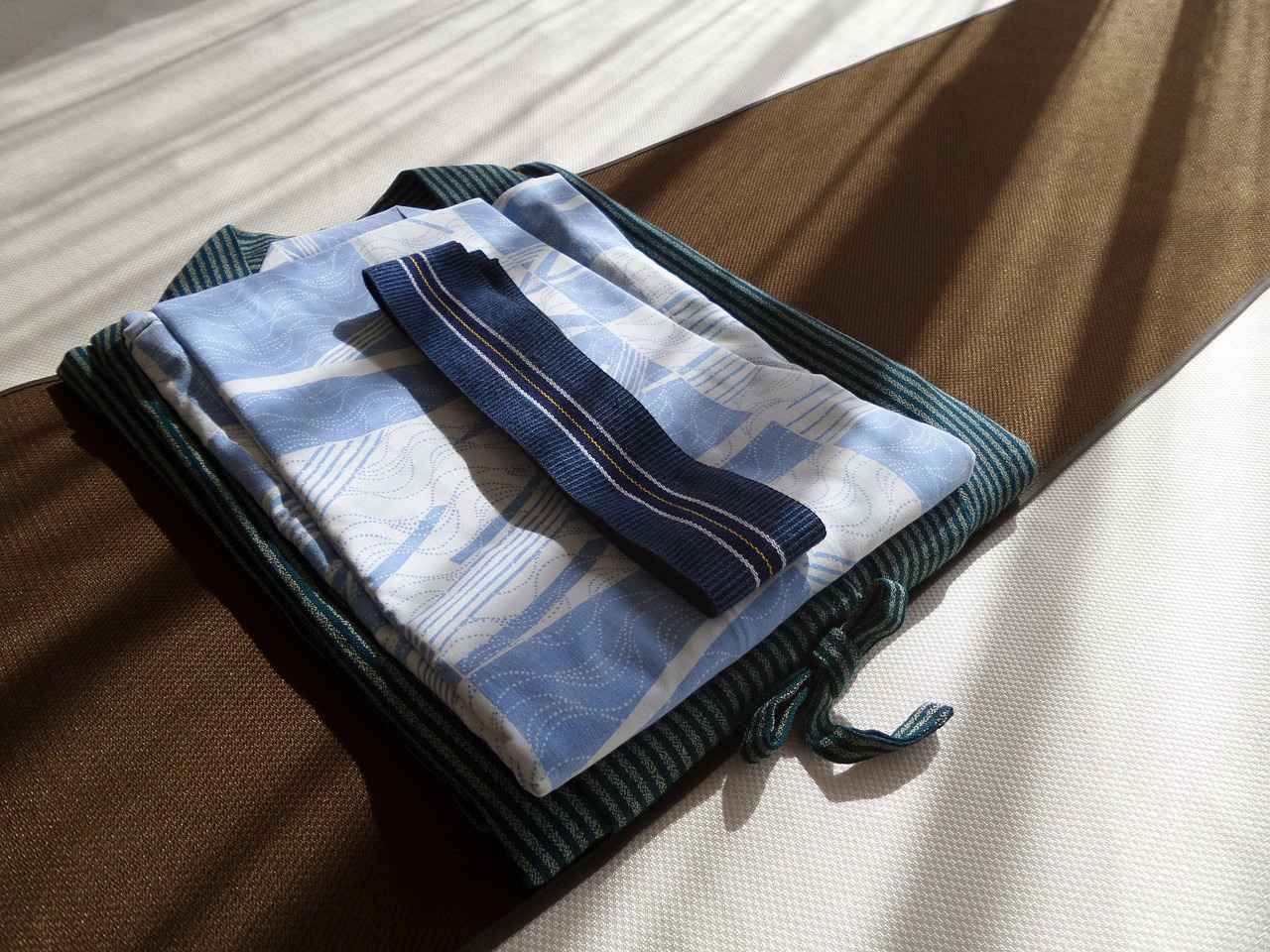
Waraji: The Traditional Straw Sandal
Waraji are a fascinating aspect of traditional Japanese footwear, made from woven straw. These sandals have a rich history, often linked to ancient times when they were worn by samurai and common folk alike. Their design is not only practical but also reflects the cultural heritage of Japan.
The origins of waraji can be traced back over a thousand years, serving as a vital part of the everyday attire for many Japanese people. Traditionally, they were crafted by hand using natural materials, making them an eco-friendly choice. Waraji are often associated with historical figures, symbolizing the connection between the past and present.
Waraji are characterized by their simple yet effective design. They are made from straw that is woven into a flat sole, with additional straps that secure the sandal to the foot. This design allows for flexibility and comfort, making them ideal for long wear. The breathability of straw also helps keep the feet cool, especially during warm seasons.
One of the main advantages of waraji is their comfort. They are lightweight and easy to wear, making them suitable for various activities, from casual walks to traditional festivals. Their functionality is enhanced by the fact that they can be easily repaired or replaced, aligning with sustainable practices.
In recent years, contemporary designers have embraced waraji, incorporating them into modern fashion. These adaptations often blend traditional craftsmanship with current trends, creating unique styles that appeal to a broader audience. The revival of waraji in today’s fashion scene highlights their enduring appeal and versatility.
Waraji represent more than just a form of footwear; they embody a rich cultural legacy that continues to evolve. Whether worn during traditional ceremonies or as part of modern outfits, these sandals offer a unique blend of comfort and style that resonates with wearers of all generations.
Comfort and Functionality of Waraji
When it comes to traditional Japanese footwear, waraji stands out as a remarkable choice that combines both comfort and functionality. These straw sandals have been a part of Japanese culture for centuries, originally designed for farmers and laborers who required durable and lightweight footwear for their daily activities.
Crafted from woven straw, waraji are not only easy to wear but also allow for breathability, making them ideal for long periods of use. Their simplistic design is complemented by a unique lacing system that ensures a secure fit, which is essential for those engaging in various activities, whether it be walking through rural landscapes or participating in vibrant festivals.
One of the most significant advantages of waraji is their adaptability. Unlike many modern shoes, which can be restrictive, waraji mold to the shape of the wearer’s feet over time, providing a custom fit that enhances comfort. This feature is particularly beneficial for individuals who spend long hours on their feet, as the sandals provide adequate support while allowing for natural foot movement.
In addition to their comfort, waraji are also practical. Their lightweight nature makes them easy to carry, and they can be quickly put on or taken off, which is ideal for various settings, including rural areas where one might need to navigate uneven terrain. Furthermore, their rustic aesthetic pairs beautifully with traditional Japanese attire, making them a popular choice during cultural events.
As modern footwear continues to evolve, waraji remain a testament to the balance of tradition and practicality. They are not just shoes; they are a piece of history that offers a unique blend of comfort, functionality, and cultural significance.
Modern Interpretations of Waraji
have taken a fascinating turn in the world of fashion, bridging the gap between traditional craftsmanship and contemporary design. This evolution not only honors the rich heritage of these ancient Japanese sandals but also makes them relevant in today’s fashion landscape.
Waraji, traditionally made from woven straw, were designed for practicality and comfort. However, modern designers have reimagined these sandals, incorporating innovative materials and styles that cater to the tastes of today’s consumers. The blend of traditional techniques with modern aesthetics results in footwear that is not only functional but also a statement piece.
| Traditional Features | Modern Innovations |
|---|---|
| Woven straw construction | Use of sustainable materials like recycled plastics and organic fabrics |
| Simple, flat design | Incorporation of vibrant colors, patterns, and embellishments |
| Comfort-focused | Enhanced cushioning and ergonomic designs |
Contemporary designers have also embraced the art of customization, allowing wearers to personalize their waraji. This can include various color choices, unique strap designs, and even the addition of decorative elements such as beads or embroidery. This level of personalization appeals to a younger audience looking to express their individuality through fashion.
Moreover, the rise of sustainable fashion has prompted many designers to focus on eco-friendly practices. By using renewable resources and ethical production methods, modern waraji not only pay homage to their roots but also contribute positively to the environment.
In conclusion, the modern interpretations of waraji showcase a remarkable fusion of the past and the present. By blending traditional craftsmanship with innovative design, contemporary designers have created a versatile footwear option that resonates with both fashion enthusiasts and those appreciative of cultural heritage.

Choosing the Right Kimono Shoes for You
Selecting the perfect kimono shoes is a vital aspect of enhancing your traditional attire while ensuring comfort and style. When embarking on this journey, consider the following factors that can guide your decision-making process:
- Comfort: The primary consideration should always be comfort. Kimono shoes come in various styles, and finding a pair that fits well will allow you to enjoy wearing them for extended periods. Pay attention to the materials used; options like soft fabric or cushioned soles can significantly enhance comfort.
- Occasion: Different events call for different footwear. For formal occasions, traditional styles like geta or elegant zori might be more appropriate, while casual outings could allow for more relaxed options. Understanding the context in which you’ll wear the shoes can help narrow down your choices.
- Personal Style: Your individual style plays a crucial role in your selection. Consider how the shoes will complement your existing wardrobe. Whether you prefer a classic look or a modern twist, there are kimono shoes available that can reflect your personal aesthetic.
- Fit and Sizing: It’s essential to try on different styles and sizes to find the best fit. Some designs may run larger or smaller than expected, so always check the sizing guide provided by the manufacturer.
By taking these factors into account, you can ensure that your kimono shoes not only match your wardrobe but also provide the comfort and style you desire. The right choice will enhance your overall appearance and allow you to embrace the beauty of traditional Japanese footwear.
Fit and Sizing Considerations
When it comes to choosing the perfect kimono shoes, understanding fit and sizing is essential for ensuring comfort and style. Each type of kimono shoe, whether it be zori, geta, or waraji, has its own unique sizing requirements that can significantly affect the overall wearing experience.
Why Fit Matters
A well-fitting pair of kimono shoes can enhance your comfort throughout the day. Shoes that are too tight can cause discomfort, while those that are too loose may lead to instability. Therefore, it’s important to pay attention to the specific fit requirements of each style.
Different Styles, Different Fits
- Zori: These flat sandals typically fit true to size but may vary based on the material. For example, fabric zori may stretch slightly over time, while synthetic versions may not.
- Geta: Since geta are elevated, it’s crucial to ensure they fit snugly to prevent slipping. Consider trying them on with the traditional socks (tabi) for the best fit.
- Waraji: As these are made from woven straw, they can conform to the shape of your foot over time. However, ensure they are not too tight when first worn to avoid discomfort.
Measuring Your Feet
To determine your correct size, measure your foot length and width. Many brands provide sizing charts that can help you convert these measurements into the appropriate shoe size. Remember that different manufacturers may have slight variations in sizing.
Conclusion
In conclusion, understanding the fit and sizing of kimono shoes is crucial for achieving the right balance of comfort and style. By taking the time to consider the unique characteristics of each type of shoe, you can ensure a perfect fit that enhances your overall experience.
Accessorizing Kimono Shoes
can elevate your outfit while honoring traditional aesthetics. These unique shoes, which include zori, geta, and waraji, can be paired with various outfits and accessories to create a cohesive look. Here are some practical tips on how to accessorize effectively.
- Choose Complementary Outfits: When wearing kimono shoes, opt for outfits that enhance their unique style. For example, pairing zori with a casual yukata or a simple summer dress can create a harmonious look.
- Accessorize with Traditional Elements: Incorporate traditional accessories such as obi (sashes) or haneri (collars) that match the color or pattern of your kimono shoes. This not only respects tradition but also adds a sophisticated touch to your outfit.
- Play with Color Coordination: Ensure that the colors of your kimono shoes complement your overall outfit. For instance, if you are wearing a bright kimono, consider neutral-toned shoes to balance the look.
- Layer with Modern Accessories: Don’t hesitate to mix modern fashion with traditional footwear. A stylish handbag or contemporary jewelry can provide a fresh twist to your ensemble, making it more suitable for casual outings.
- Focus on Footwear Comfort: While styling, remember that comfort is key. Ensure your kimono shoes fit well, allowing you to enjoy your day without discomfort.
In conclusion, accessorizing kimono shoes is about finding the right balance between tradition and modern style. By selecting complementary outfits and accessories, you can create a look that is both elegant and respectful of cultural heritage. Experiment with different combinations to discover what best expresses your personal style.

Maintaining Your Kimono Shoes
Proper care and maintenance of kimono shoes is essential for extending their lifespan and ensuring they remain a stylish addition to your wardrobe. Investing time in their upkeep not only preserves their aesthetic appeal but also enhances comfort, allowing you to enjoy them for years to come.
Cleaning Techniques for Different Materials
- Zori: For zori made from fabric, gently wipe them with a damp cloth. Avoid harsh detergents to prevent damage. Synthetic zori can often be washed with mild soap and water.
- Geta: Wooden geta should be cleaned with a soft, dry cloth to remove dirt and moisture. If they become stained, lightly sand the affected area to restore their finish.
- Waraji: These straw sandals can be dusted off with a soft brush. If they become wet, allow them to air dry completely to prevent mold and deterioration.
Storage Tips for Longevity
Storing your kimono shoes correctly is crucial for maintaining their shape and integrity. Here are some practical tips:
- Keep your shoes in a cool, dry place away from direct sunlight to prevent fading and warping.
- Use shoe trees or stuff them with tissue paper to help retain their shape.
- For zori and waraji, consider using a breathable bag to protect them from dust while allowing air circulation.
By following these simple yet effective maintenance practices, you can ensure that your kimono shoes remain both functional and fashionable. A little effort goes a long way in preserving the beauty of this traditional footwear, allowing you to showcase them on various occasions with pride.
Cleaning Techniques for Different Materials
When it comes to maintaining the beauty and longevity of your kimono shoes, understanding the specific cleaning techniques for various materials is essential. Each type of material used in kimono shoes has its own unique properties and requires tailored care to preserve its quality.
| Material | Cleaning Method | Tips |
|---|---|---|
| Fabric | Gently brush with a soft-bristled brush and spot clean with a damp cloth. | Test any cleaning solution on a small area first to avoid discoloration. |
| Leather | Wipe with a damp cloth and use a leather conditioner for upkeep. | Avoid soaking the leather; instead, clean it promptly after use. |
| Synthetic | Use mild soap and water; scrub with a soft sponge. | Rinse thoroughly to remove any soap residue. |
| Wood | Dust regularly and use a wood polish for shine. | Keep away from excessive moisture to prevent warping. |
| Straw | Brush off dirt and use a damp cloth for spot cleaning. | Store in a cool, dry place to prevent mold. |
By employing the appropriate cleaning techniques for each material, you can ensure that your kimono shoes remain in excellent condition. Regular maintenance not only enhances their appearance but also extends their lifespan, allowing you to enjoy their beauty for many years to come.
In conclusion, understanding the different materials used in kimono shoes and their respective cleaning methods is crucial for preserving their quality. With the right care, these beautiful footwear pieces can continue to be a cherished part of your wardrobe.
Storage Tips for Longevity
Properly storing your kimono shoes is essential for preserving their beauty and functionality. With the right techniques, you can prevent damage, maintain their shape, and ensure they remain a cherished part of your wardrobe for years to come. Here are some effective tips to consider:
- Choose the Right Location: Store your kimono shoes in a cool, dry place away from direct sunlight. Exposure to heat and moisture can warp the materials and fade colors.
- Use Shoe Trees: Inserting shoe trees can help maintain the shape of your shoes. This is particularly important for styles like zori and geta, which can easily lose their form.
- Keep Them Clean: Before storing, ensure your shoes are clean and free from dirt or moisture. Use a soft brush or cloth to wipe them down, and allow them to air dry completely.
- Utilize Dust Bags: Consider using dust bags or boxes to protect your kimono shoes from dust and scratches. This is especially important for delicate materials.
- Avoid Overcrowding: When storing multiple pairs, give each pair enough space to breathe. Overcrowding can lead to deformation and scuffing.
- Regular Checks: Periodically check on your stored shoes to ensure they are in good condition. Look for signs of wear or damage and address them promptly.
By following these storage tips, you can significantly extend the life of your kimono shoes, allowing you to enjoy their unique style and comfort for many occasions to come. Remember, a little care goes a long way in preserving the beauty of these traditional footwear pieces.
Frequently Asked Questions
- What are kimono shoes?
Kimono shoes are traditional Japanese footwear that includes various styles like zori, geta, and waraji. They combine comfort with cultural significance, making them a unique choice for both traditional and modern outfits.
- How do I choose the right kimono shoes for my outfit?
Choosing the right kimono shoes depends on the occasion, your personal style, and the outfit you plan to wear. Consider the type of shoe that complements your attire and offers the comfort you need.
- Are kimono shoes comfortable for all-day wear?
Yes! Many kimono shoes, especially waraji and zori, are designed for comfort. They provide good support and can be worn for extended periods, making them ideal for festivals or casual outings.
- How do I maintain and clean my kimono shoes?
Maintenance varies by material. For zori, a damp cloth can be used for cleaning, while wooden geta may require polishing. Always check the care instructions specific to your shoe type for best results!
- Can I wear kimono shoes with modern clothing?
Absolutely! Kimono shoes can be styled with both traditional and contemporary outfits. Pair them with casual wear or even chic dresses for a unique fashion statement.
